Product Images Levetiracetam
View Photos of Packaging, Labels & Appearance
Product Label Images
The following 10 images provide visual information about the product associated with Levetiracetam NDC 63739-795 by Mckesson Corporation Dba Sky Packaginng, such as packaging, labeling, and the appearance of the drug itself. This resource could be helpful for medical professionals, pharmacists, and patients seeking to verify medication information and ensure they have the correct product.
500mg
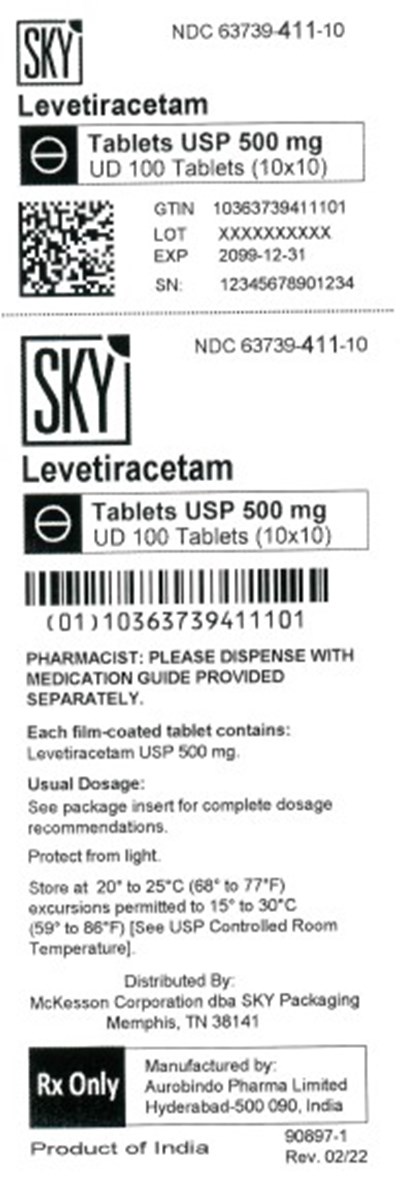
Tablots USP 500 mg is a medication available in a pack of 100 tablets. Each tablet contains 500 mg of Levetiracetam. The medication guide is provided for reference. The usual dosage can be as per the prescription. The medication should be stored at between 15-25°C. The manufacturer's details are also mentioned.*
Levetiracetam 250mg
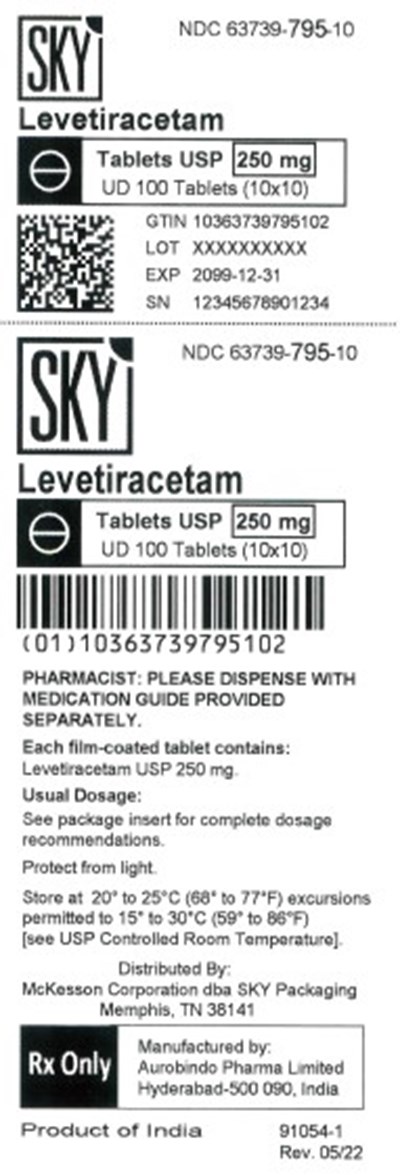
Levetiracetam is a medication in tablet form, packaged in a container with 100 tablets (10x10). The dosage information is provided in the package and should be followed accordingly. The medication guide is provided separately for dispensing. The product appears to be manufactured in India.*
Levetiracetam 750mg
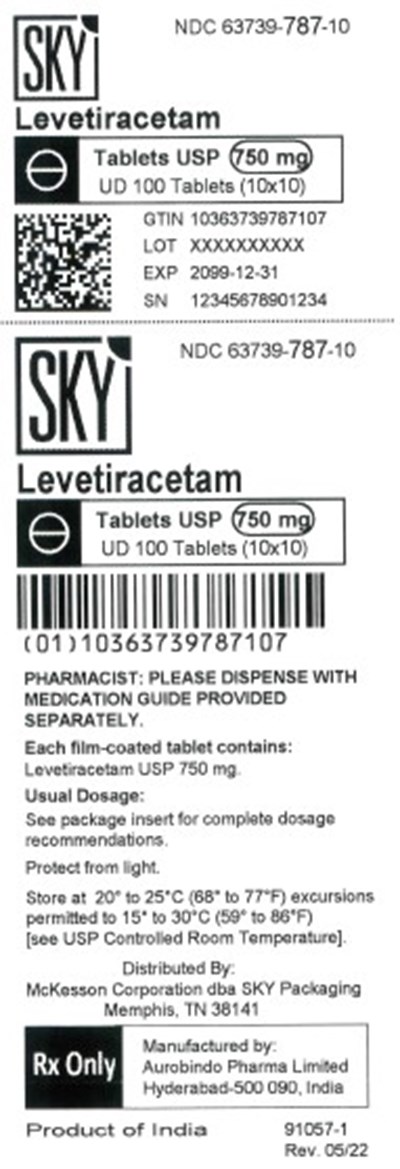
This is information about Levetiracetam Tablets USP, with packaging details and dosage information. The product was made in India and has a National Drug Code of 63738-787-10. The package includes 100 tablets with a dosage of 30mg each and includes a guide for the pharmacist to dispense the medication separately.*
levetiracetam northstar 2
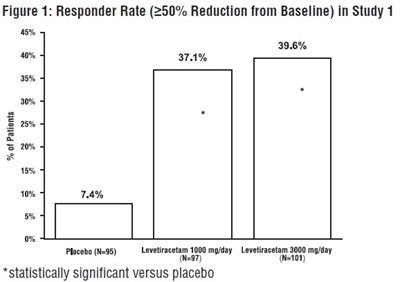
The figure shows the Responder Rate in Study 1 with a 250% reduction from baseline. The percentage ranges from 0% to 39.6%. The treatments mentioned are Leviatach 100 and Leviaseam 000. The text indicates that the treatment is statistically significant compared to the placebo.*
levetiracetam northstar 3
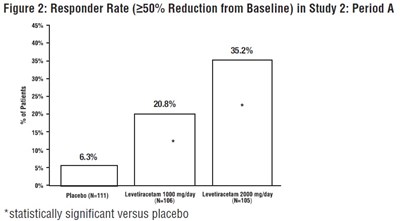
The text presents the Responder Rate graph from Study 2, displaying the percentage of patients who experienced a 250% reduction from the baseline in Period A. The graph shows the percentage of patients for each group, including Placebo (N=111), Levetiracetam 1000 mg/day (N=106), and Levetiracetam 2000 mg/day (N=105). The asterisk (*) indicates that Levetiracetam 2000 mg/day had a statistically significant result when compared to placebo.*
levetiracetam northstar 4
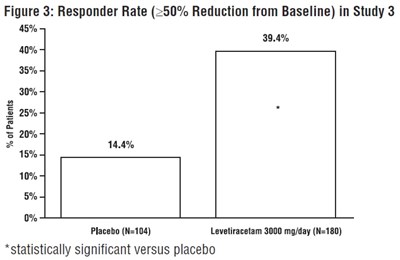
The figure presents the Responder Rate in Study 3, indicating the percentage of participants who achieved more than 50% reduction from baseline symptoms. The responder rates for placebo Group (N=104) and Levetiracetam 3000 mg/day Group (N=180) are 14.4% and 45%, respectively. This difference is statistically significant.*
levetiracetam northstar 5
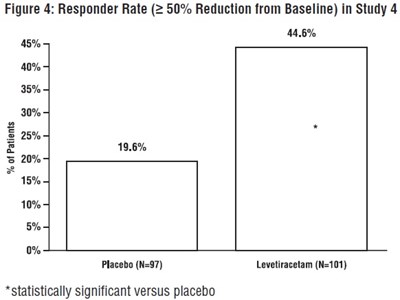
This appears to be a figure illustrating the Responder Rate in Study 4, showing a 50% reduction from Baseline. The graph shows that the responder rate for patients taking Levetiracetam was higher compared to the placebo group. The percentage values of the responder rate were 44.6% and 45% for the Levetiracetam and placebo groups respectively, with a statistically significant difference between the two groups.*
levetiracetam northstar 6
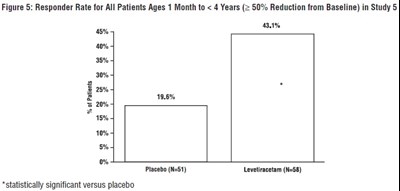
The figure shows the percentage of patients ages 1 month to less than 4 years who responded to the treatment with Levetiracetam compared to placebo in Study 5. The responder rate was over 50% reduction from baseline. The horizontal axis represents the percentage of patients, while the vertical axis represents the treatment groups. The results showed a statistically significant improvement in the Levetiracetam group compared to placebo.*
levetiracetam northstar 7
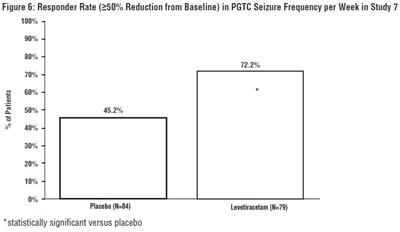
The text describes a figure (Figure 6) showing the responder rate in PGTC Seizure Frequency per week in a study (Study 7). The figure shows the percentage of patients (9%) and the reduction (250%) of PGTC seizure frequency per week. The data shows that the levetiracetam medication was statistically significant in reducing PGTC seizure frequency compared to the placebo group.*
* The product label images have been analyzed using a combination of traditional computing and machine learning techniques. It should be noted that the descriptions provided may not be entirely accurate as they are experimental in nature. Use the information in this page at your own discretion and risk.
